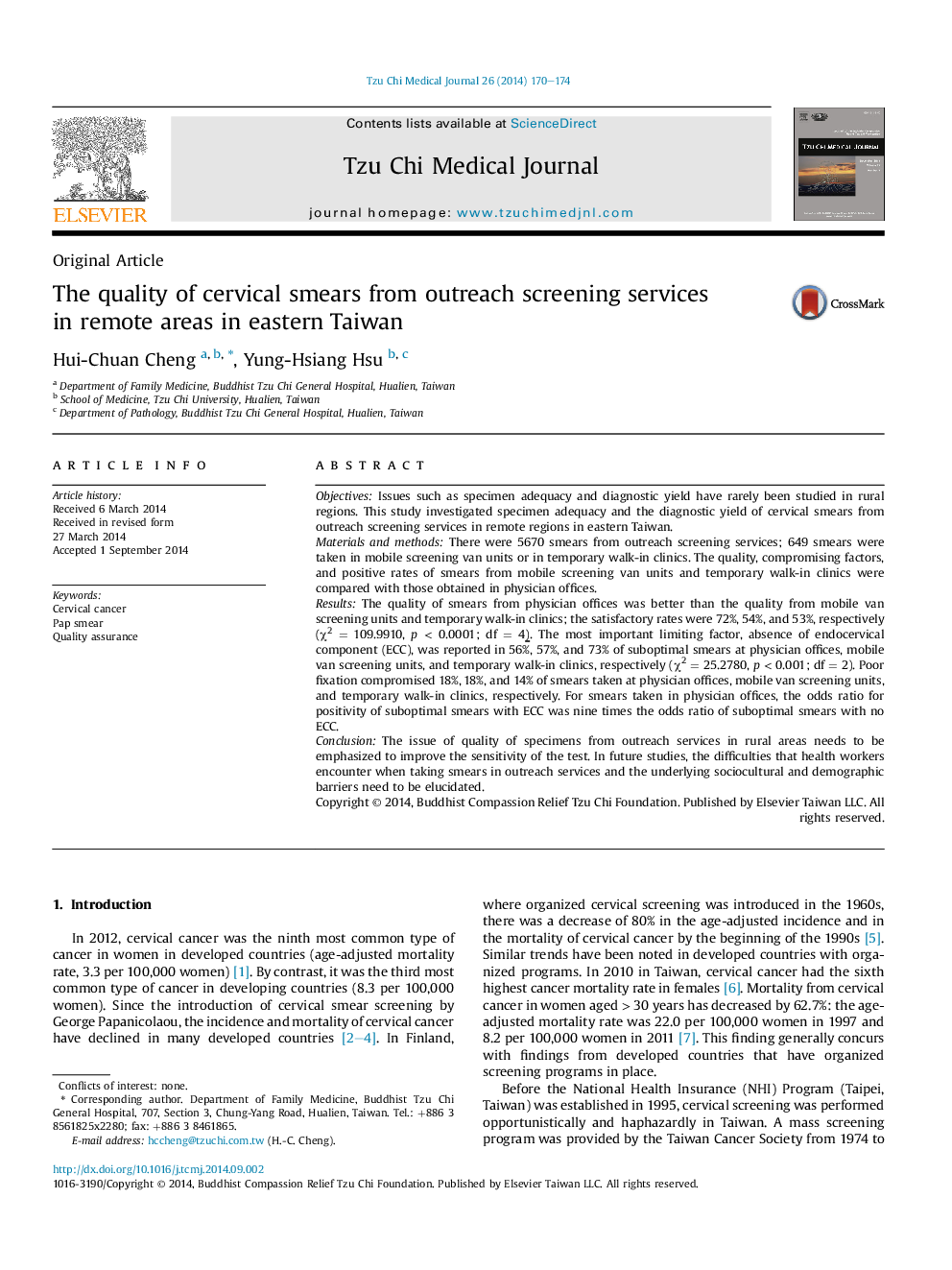| Article ID | Journal | Published Year | Pages | File Type |
|---|---|---|---|---|
| 3841852 | Tzu Chi Medical Journal | 2014 | 5 Pages |
ObjectivesIssues such as specimen adequacy and diagnostic yield have rarely been studied in rural regions. This study investigated specimen adequacy and the diagnostic yield of cervical smears from outreach screening services in remote regions in eastern Taiwan.Materials and methodsThere were 5670 smears from outreach screening services; 649 smears were taken in mobile screening van units or in temporary walk-in clinics. The quality, compromising factors, and positive rates of smears from mobile screening van units and temporary walk-in clinics were compared with those obtained in physician offices.ResultsThe quality of smears from physician offices was better than the quality from mobile van screening units and temporary walk-in clinics; the satisfactory rates were 72%, 54%, and 53%, respectively (χ2 = 109.9910, p < 0.0001; df = 4). The most important limiting factor, absence of endocervical component (ECC), was reported in 56%, 57%, and 73% of suboptimal smears at physician offices, mobile van screening units, and temporary walk-in clinics, respectively (χ2 = 25.2780, p < 0.001; df = 2). Poor fixation compromised 18%, 18%, and 14% of smears taken at physician offices, mobile van screening units, and temporary walk-in clinics, respectively. For smears taken in physician offices, the odds ratio for positivity of suboptimal smears with ECC was nine times the odds ratio of suboptimal smears with no ECC.ConclusionThe issue of quality of specimens from outreach services in rural areas needs to be emphasized to improve the sensitivity of the test. In future studies, the difficulties that health workers encounter when taking smears in outreach services and the underlying sociocultural and demographic barriers need to be elucidated.
